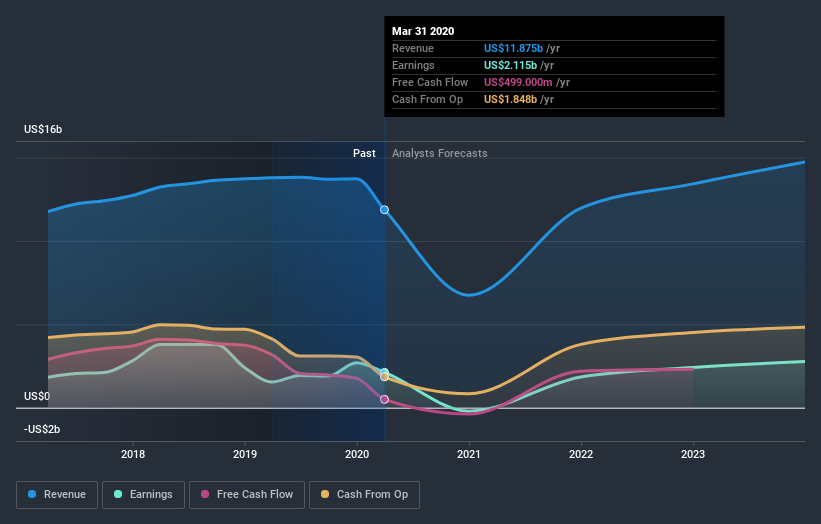Las Vegas Sands' (NYSE:LVS) Shareholders Are Down 26% On Their Shares

Las Vegas Sands Corp. (NYSE:LVS) shareholders should be happy to see the share price up 17% in the last quarter. But that doesn't change the reality of under-performance over the last twelve months. After all, the share price is down 26% in the last year, significantly under-performing the market.
See our latest analysis for Las Vegas Sands
While the efficient markets hypothesis continues to be taught by some, it has been proven that markets are over-reactive dynamic systems, and investors are not always rational. One flawed but reasonable way to assess how sentiment around a company has changed is to compare the earnings per share (EPS) with the share price.
During the unfortunate twelve months during which the Las Vegas Sands share price fell, it actually saw its earnings per share (EPS) improve by 39%. It could be that the share price was previously over-hyped.
It's fair to say that the share price does not seem to be reflecting the EPS growth. So it's easy to justify a look at some other metrics.
On the other hand, we're certainly perturbed by the 14% decline in Las Vegas Sands' revenue. If the market sees the weak revenue as jeopardising EPS, that could explain the lower share price.
The company's revenue and earnings (over time) are depicted in the image below (click to see the exact numbers).
Las Vegas Sands is well known by investors, and plenty of clever analysts have tried to predict the future profit levels. You can see what analysts are predicting for Las Vegas Sands in this interactive graph of future profit estimates.
What about the Total Shareholder Return (TSR)?
Investors should note that there's a difference between Las Vegas Sands' total shareholder return (TSR) and its share price change, which we've covered above. Arguably the TSR is a more complete return calculation because it accounts for the value of dividends (as if they were reinvested), along with the hypothetical value of any discounted capital that have been offered to shareholders. Its history of dividend payouts mean that Las Vegas Sands' TSR, which was a 23% drop over the last year, was not as bad as the share price return.
A Different Perspective
While the broader market gained around 11% in the last year, Las Vegas Sands shareholders lost 23%. However, keep in mind that even the best stocks will sometimes underperform the market over a twelve month period. Longer term investors wouldn't be so upset, since they would have made 2.5%, each year, over five years. If the fundamental data continues to indicate long term sustainable growth, the current sell-off could be an opportunity worth considering. I find it very interesting to look at share price over the long term as a proxy for business performance. But to truly gain insight, we need to consider other information, too. Consider risks, for instance. Every company has them, and we've spotted 1 warning sign for Las Vegas Sands you should know about.
Of course Las Vegas Sands may not be the best stock to buy. So you may wish to see this free collection of growth stocks.
Please note, the market returns quoted in this article reflect the market weighted average returns of stocks that currently trade on US exchanges.
This article by Simply Wall St is general in nature. It does not constitute a recommendation to buy or sell any stock, and does not take account of your objectives, or your financial situation. We aim to bring you long-term focused analysis driven by fundamental data. Note that our analysis may not factor in the latest price-sensitive company announcements or qualitative material. Simply Wall St has no position in any stocks mentioned.
Have feedback on this article? Concerned about the content? Get in touch with us directly. Alternatively, email editorial-team@simplywallst.com.

